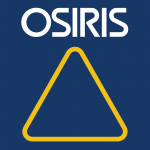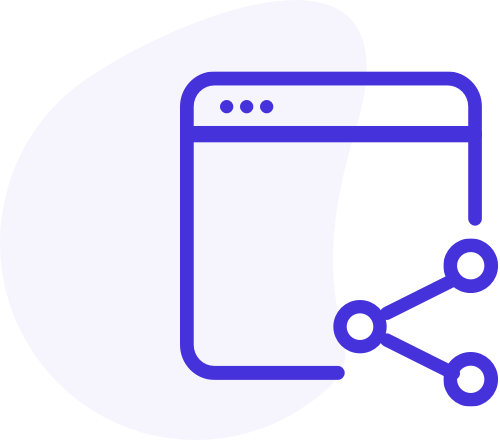we build to our clients needs
our clients
Osiris Consultants have a proven track record of performing under pressure and meeting stringent deadlines, to ensure our clients receive the best outcome. We have worked with some industry leaders and have helped them to develop new processes, as well as streamlining existing ones.


We Are Here To Help
Osiris Consultants have a proven track record of performing under pressure and meeting stringent deadlines, to ensure our clients receive the best outcome. We have worked with some industry leaders and have helped them to develop new processes, as well as streamlining existing ones.
see what we've been doing.....
our previous clients

Glencore UK and ST Shipping and Transport Ltd
2001 - 2015
Employed as the Business Change Manager for the Oil Trading group, Adrian worked on the trading floor and was responsible for new IT business systems. He sat on various IT application advisory boards and was a world-wide consultant on shipping matters. He was the group's internal expert on vessel efficiency, anti-piracy, and emissions control.
Main responsibilities and achievements included:
Led a team that developed the short- and long-term strategic architecture for physical oil trading world-wide.
He was a primary contributor to the setting up of physical security regimes for vessel protection. He liaised with Insurance companies on how to report and protect vessels. Advised on hardening of both shore and vessels against cyber threats.
Designed, promoted and introduced new concepts to handle large amounts of email traffic that are crucial to the ST Shipping trading desks. This included the ability to search more than 9 million documents of ages ranging from immediate to over 15 years with consistent sub-second response time.
Proposed and managed the implementation a change to the way multi-currency micro payments for trading contracts were affected, detecting major flaws in FX handling in the process. Saved 5 FTE head count, dramatically cut execution costs, and provided a near STP process for these costs.
Responsible for the regeneration of the European Gas Trading system, introducing new trade types, new markets, and met the ReMIT UK and European regulatory reporting standards.
Responsible for the business integration of intelligence data and security of assets. This includes the security of highly valuable data, physical risk avoidance, and real-time secure asset tracking using non-detectable means within a high threat environment. This involved liaison with military intelligence for interpretation of raw data and for bespoke detection and protection systems.
Proposed, designed and managed the introduction of a geospatial Business Intelligence system to track commodity physical logistics movements and report trading patterns. This system consolidates near real-time information and is a key driver to traders in obtaining accurate and up-to-date market intelligence. This system utilised AIS data, non-structured information from brokers and traders, and market information. It augmented the raw data with business knowledge to track oil commodity flows world-wide. He was responsible for the concept and was the lead architect.
Introduced a new freight trading system for the tanker division, using SoftMAR. This resulted in the growth of the fleet from 30 vessels to over 280 vessels. Managed the transformational change that this introduced, including merging three different trading groups world-wide into a single new organisation based in Singapore. Implemented a new method for sharing trading risk, resulting in a reduction in up-front capital cost. Worked with the finance team to introduce rigorous risk management (trading, credit, counterparty) and oversaw integration with SAP.
Designed and project managed a demurrage system for the trading division. This system automated the creation of claims from the Energy Trading and Risk Management platform (ETRM) so that no claims were lost. It encompassed a claims calculator to improve efficiency. The claims could be prorated between different suppliers and receivers based on BL quantities. It reported outstanding and generated statements of accounts. The agreed demurrage charges were then posted back to the ETRM.

Data Security and Encryption
Adrian has worked with encryption and data privacy for many years. He has experienced the fall out when data is compromised by external malicious actors, and has designed solutions to avoid such actions in the future. He believes that not only data should be confidential, but also metadata. He is involved in the design of solutions that have provable security built in from the design stage.

Energis
1994 - 2001
Within Energis, Adrian assisted the company to grow from a start-up funded by National Grid to evolve into a major business Telco, since acquired by Cable and Wireless. He was the driving force behind the design of virtually all of Energis’ customer reporting solutions for a variety of services, including Internet Services and Call Centre performance reporting.
Responsible for defining and planning all IS aspects of new telephony services. Two key projects were the world’s first truly free ISP (FreeServe); the second was a free consumer telephony service where he was involved in both technical and commercial product design.
Application Architect and Design Authority.
Successfully introduced a platform architecture that reduced costs by consolidating to a fixed and well-defined subset of hardware, database, and systems management software. He provided business solutions that were backed by technology with low capital costs, yet still offering incremental growth. He was responsible for the capacity and security plans. He managed the Y2K readiness programme.
Machine Room Design.
On joining Energis, Adrian was confronted with an empty computer suite and asked to work on the delivery of a complete IT infrastructure. This involved working with a variety of hardware and software companies, and overseeing the installation of a large number of disparate computing systems:
• Customer Care systems on Sequent
• Billing systems on AS400
• Interconnect with BT on DECUnix
• Card Payments on Tandem
• GIS system on DECUnix
• Business Intelligence and reporting on RS/6000 SP2
• Common disk subsystem on EMC2 disk systems
Disaster Recovery/Business Continuity
Part of the team that designed and implemented the fault tolerant environment that provided 24x7 uptime needed in a consumer telephony environment. Ensured that procedures were in place. Just before the first trial ran a fault in the fire suppression system caused a flood in the computer room and proved that the solutions worked as expected.
Security Design
Worked with the network design teams for the BBC, National Grid and FreeServe teams to ensure that security was not just designed into these platforms but could be done so in a demonstrable manner. This was crucial to obtaining both commercial and regulatory acceptance. Handled audits into these aspects of the projects on behalf of the company.

Nuclear Electric
As Technical Project Leader, Adrian was responsible for the successful implementation of the Energy Management System with a high availability secure database system, dealing desk interfaces to the Power Stations and Grid control centres and links to the final stage of the power station equipment. Provable integrity and security of the control systems was crucial. This project was completed on-time and on-budget, and included the commissioning of a new computer suite and dealing desk room.

High Performance Computing
Adrian was part of a team that introduced the first cray super computer to an oil company and was responsible for providing the netork attachement. He worked closely with Cray to integrate the system into the companies exploration division. The Cray was used to perform high quality 4D modeling of oil reservoir reserves.
The introduction of the Cray showed that the problem was now pushed to interpretation of the results, which now become the bottleneck. A second project for the same oil company was to take the graphical interpretors and rebuild the code in silicon. This was done using the Transputer, a highly parallel chip that combined processing, memory and interconnect. these system successfully delivered a 4D model that was viewable in 2 D, with a controllable third dimension. The result was that imaging which used to take 30 minutes per frame could now be done at 3 frames per second. In its first usage it allowed the production manager of a field to extend the life of the oil reservoir by over 20 years.
Adrian is privately researching how to use cheap, commodity components to create high capacity parallel processors in a share nothing database.

Marcura
January 2016 - October 2018
Marcura is a Dubai-based private company providing business services to the the global maritime industry. Since the launch of DA-Desk in 2001, the Marcura Group has continuously launched new services and it now has 600 employees operating out of UAE, Mumbai, UK, USA and Japan.
With his extensive knowledge of shipping and his well-developed IT and business transformation skills, Adrian was asked to join Marcura with the specific task of developing a new product to add to its growing portfolio - MarDocs. He was appointed Director of a new London-office.
MarDocs is a secure, cloud-based collaboration tool that enables Charterers, Owners and Brokers to manage fixtures and charter parties in a whole new way and with total security. It brings efficiency to a notoriously manual driven process, supports a new era of regulatory compliance, at a cost that is far exceeded by its benefits. It is positioned to become the leading repository for Fixture documents, with efficient record retention and strong internal controls. It has extensive audit reporting capabilities.
Managing a team of developers and consulting with stakeholders, he brought MarDocs from initial concept to product launch within ten-months and securing the first sale to a major international oil company shortly after. MarDocs now manages all of their world-wide waterborne transportation contracts.
In mid 2017 he moved to another important role within the organisation: managing the integration of Marcura products both within the group and client’s bespoke systems. This has to be done with due regard for the confidential nature of the commercial information being exchanged. Integration tasks started by writing a policy for how applications would be designed and in some cases retro-fitted with facilities to allow for integration. After auditing where the applications work, he designed a strategy to allow for integration using specialist software. This resulted in some major work streams to implement the intelligent sharing for information between applications at the business layer, not at the shared SQL level.
In late 2018 Marcura took the decision to move all technical teams to Dubai, which is when Adrian left the company.

British Satellite Broadcasting
Before its acquisition by Sky, BSB ran a 5 channel digital Satellite TV system, based on the "squarial". Adrian was DBA for the playout planning system that prepared programmes and adverts for broadcast. This permitted programme planners to decide the times and durations of sections, with video and audio fades. The data was then downloaded in to five robotic playout machines, each storing a hundred or so Sony Betamax Professional tapes, and 10 players. As DBA it was Adrian's job to ensure the database ran smoothly and maintained its connection to the playout machines. Failure here would have resulted in a loss of signal to the satellite. A demanding role, that came to an abrupt end when Shy purchased BSB..

Midland Bank
Midland Bank was the fore runner of HSBC. Adrian worked as a DBA, including the All-in-One office automation system from Digital Equipment. In one incident a discrepancy was found in the bank's reconciliation and Adrian had to spend an Easter weekend tracking and linking emails from a number of branches to identify the issue.

Power Generation
Adrian worked extensively in assisting the deregulation of the power industry. He worked with two power regulators. For one of these, Nuclear Electric, he has to ensure total data security in a fully redundant solution that would allow the real time management of the UK's nuclear power capacity.
He was also involved with coal and gas fired power stations. He worked on projects for National grid on a number of occasions. Once in providing information on demand to the regional electricity companies; and secondly on providing secure network capability to every switching element on the Grid Network.